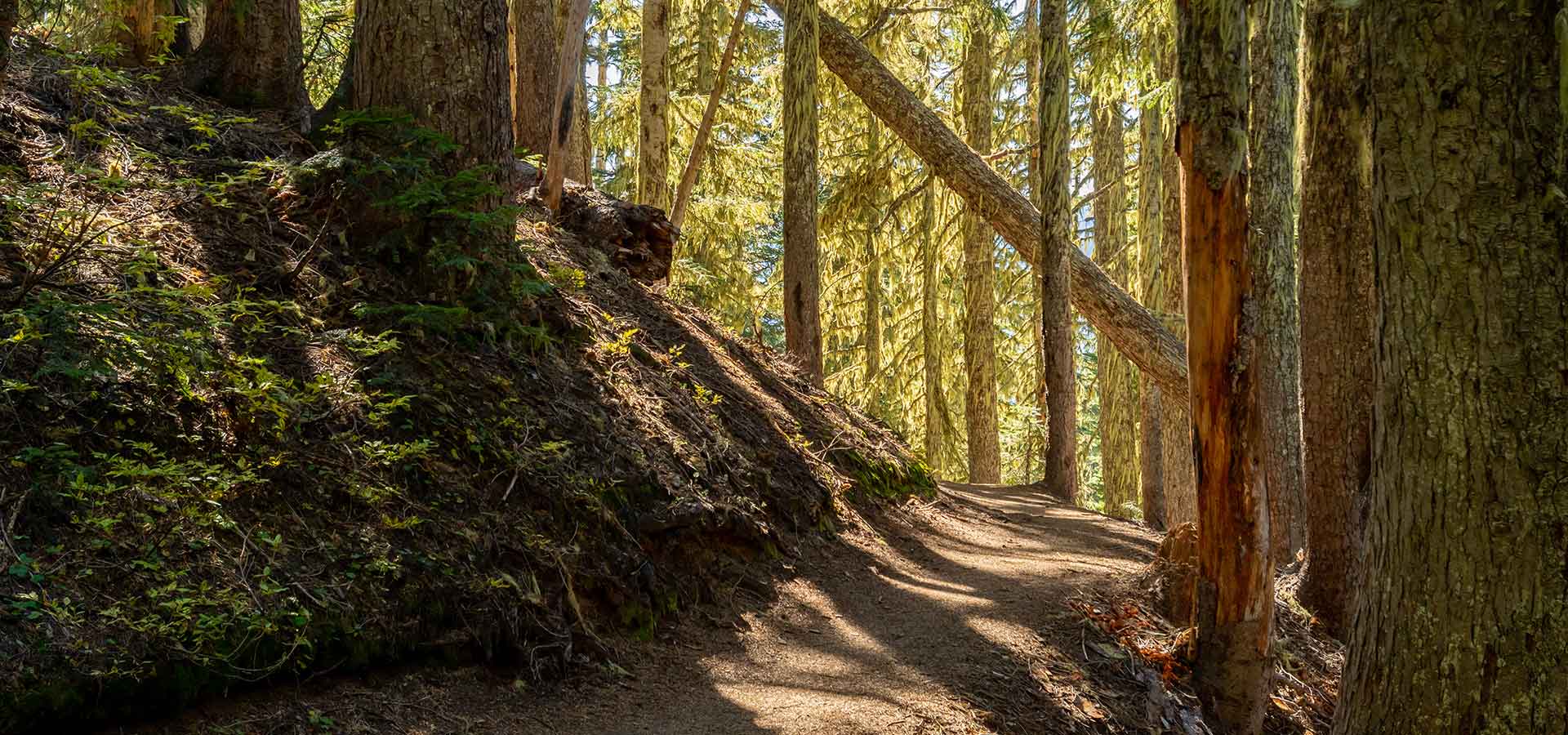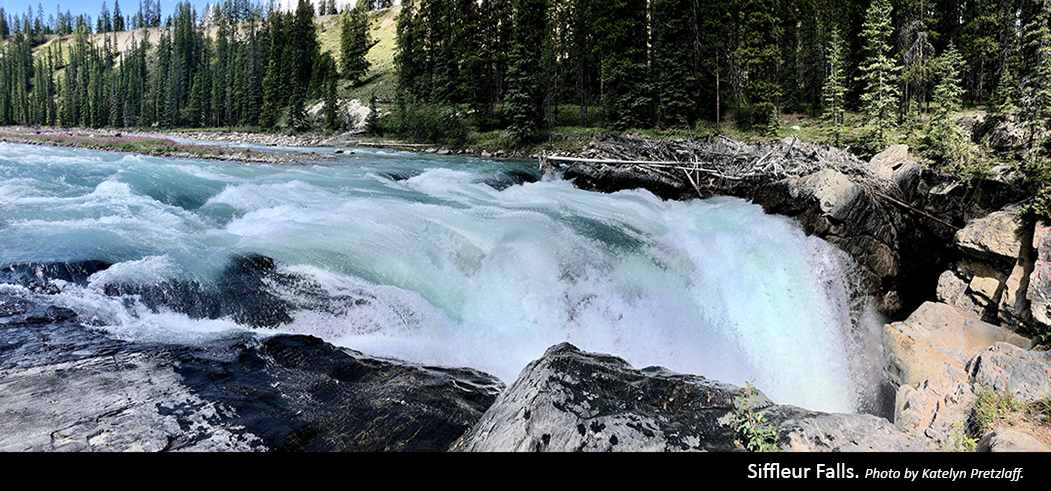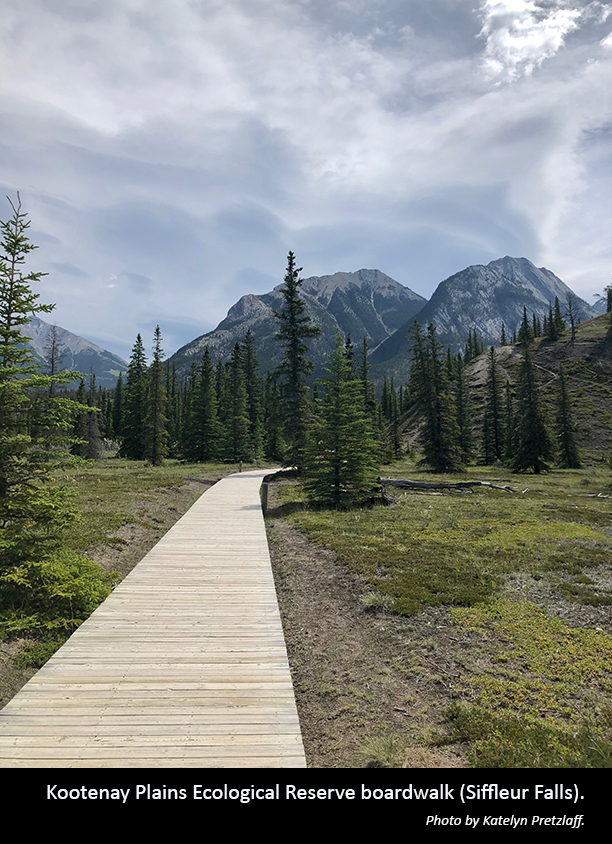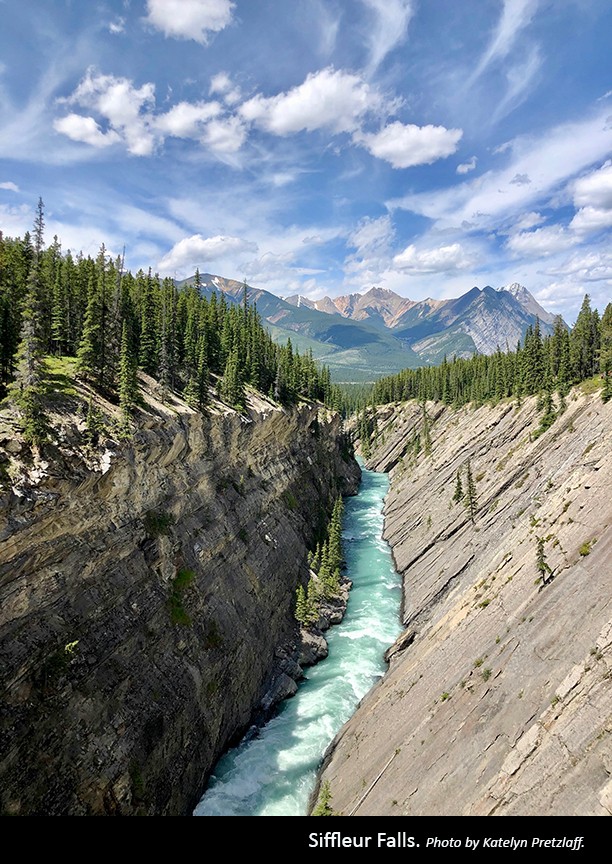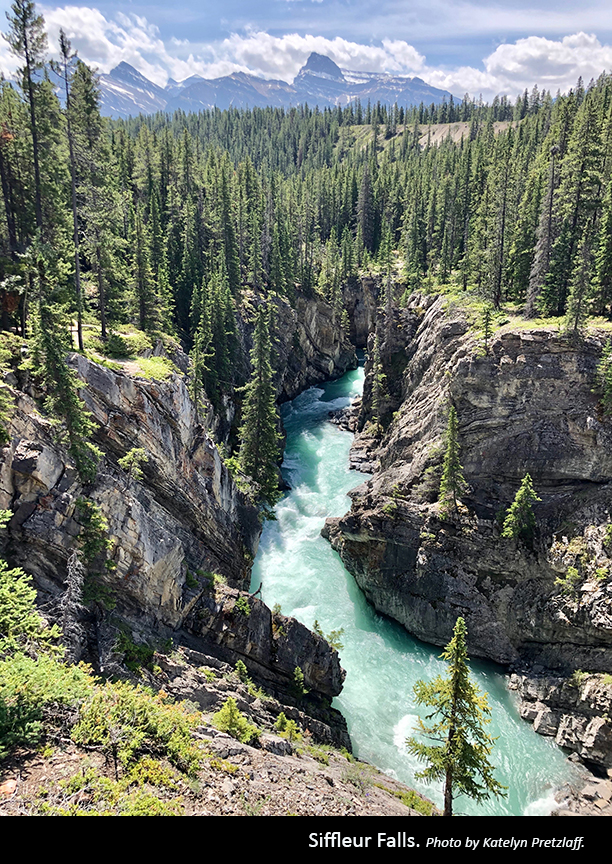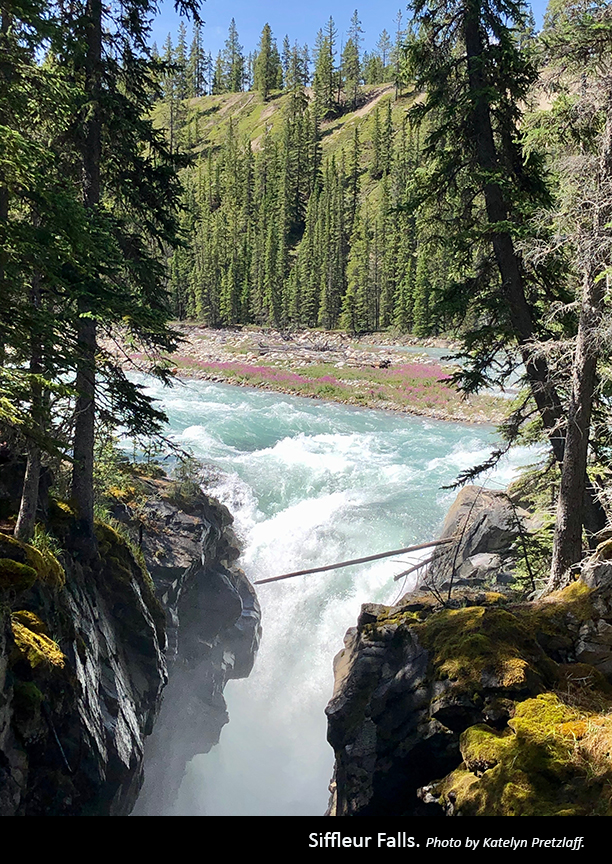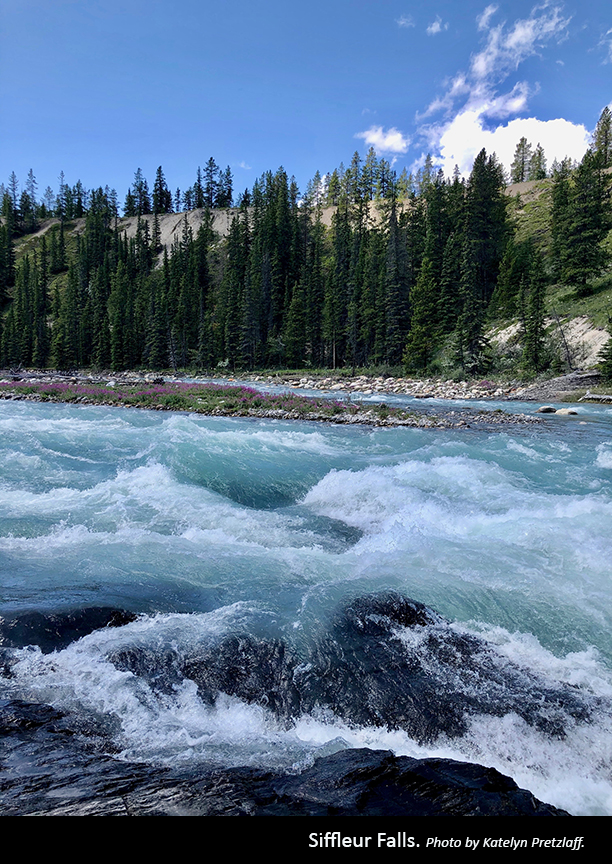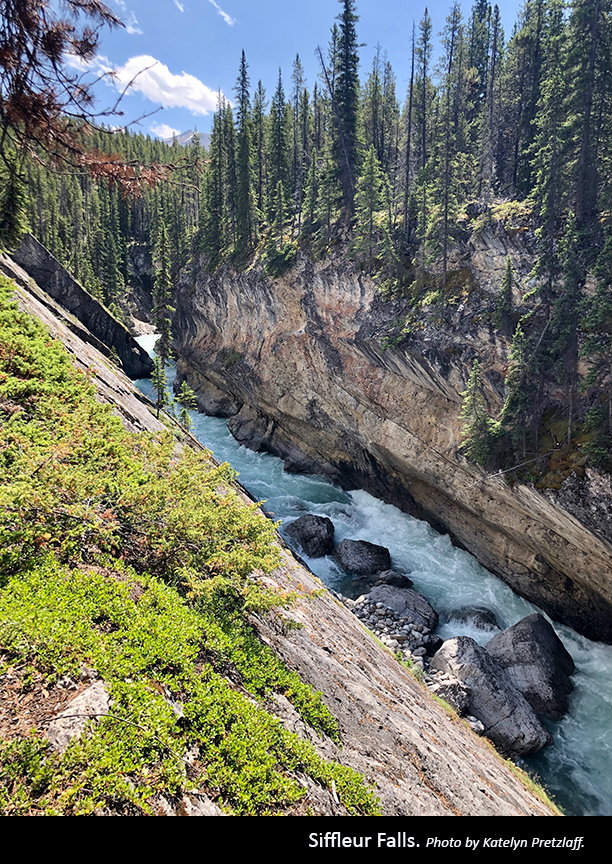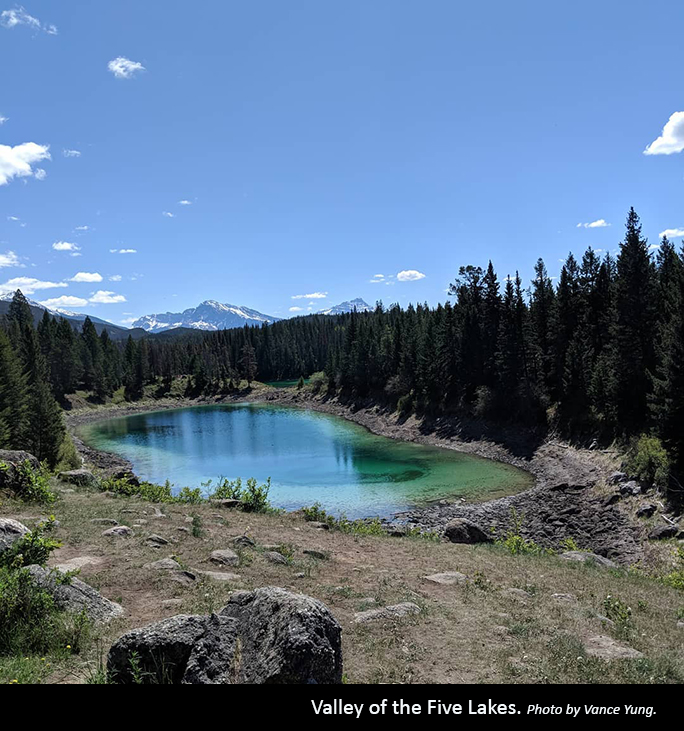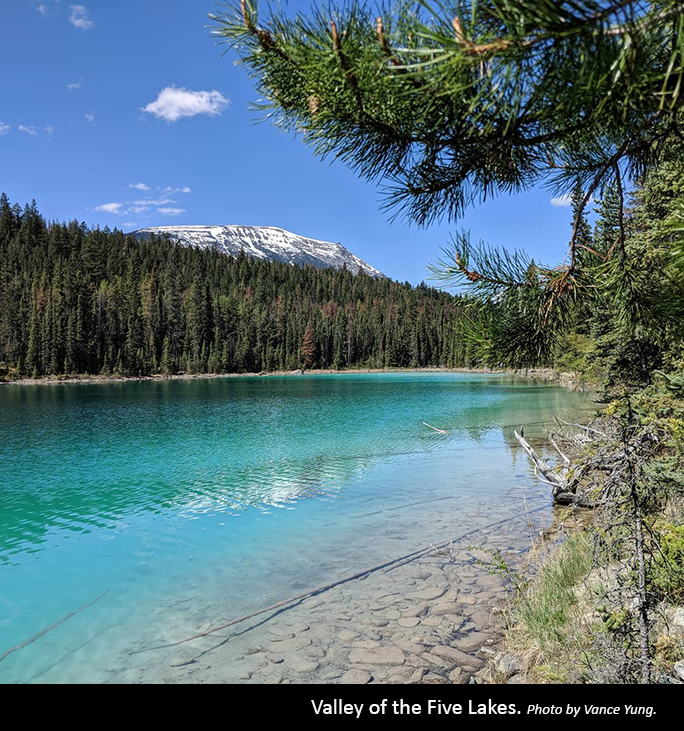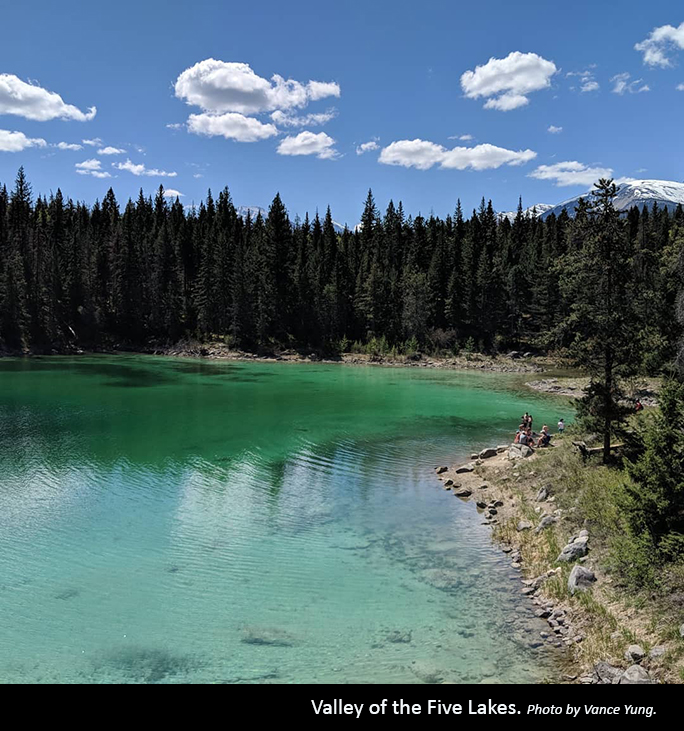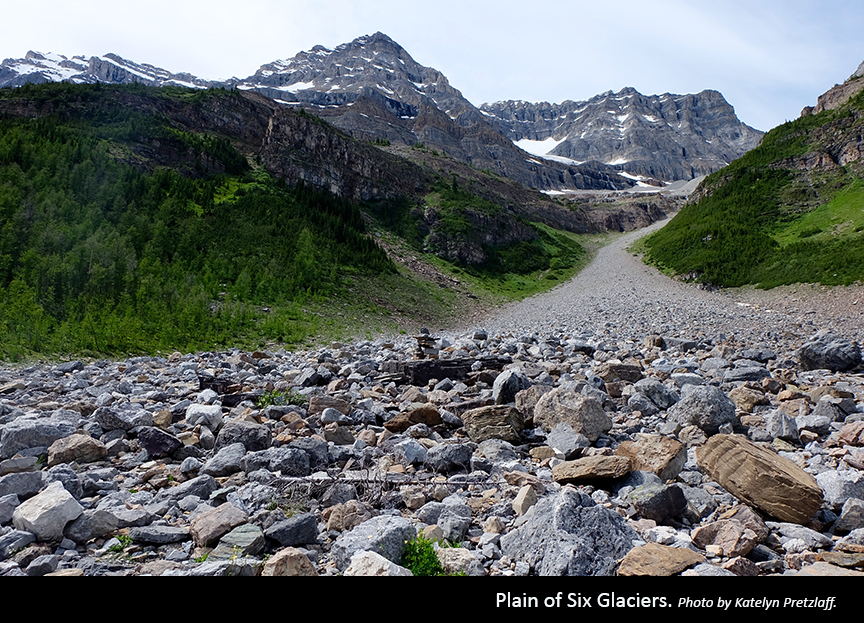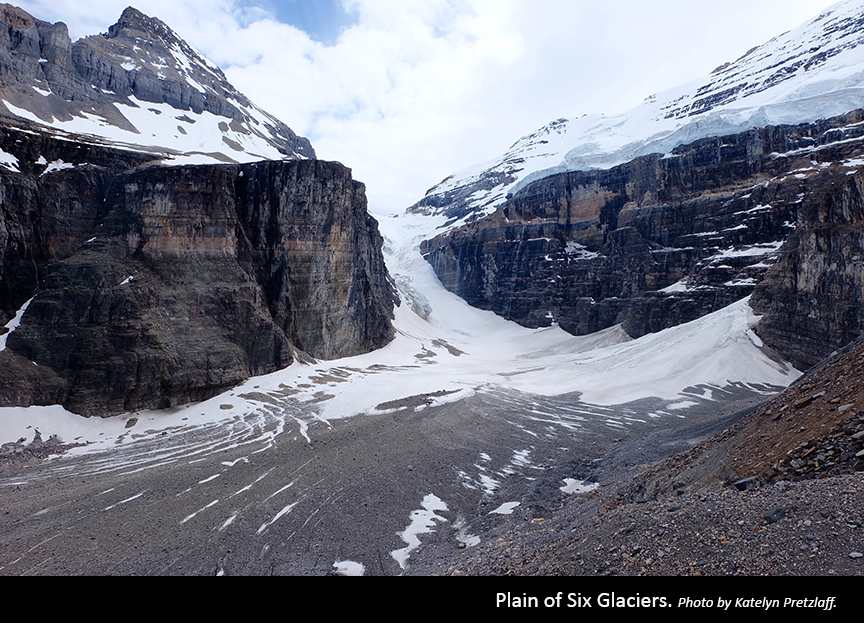If there is one thing we can take advantage of now, it’s spending more time outdoors. Being physically active outdoors is an easy, inexpensive way to improve your fitness and energy levels, boost your mental health and is something you can do with the whole family.
Whether you’re an avid hiker or just looking to explore a little more of Alberta this summer, we’ve pulled together a list of some of our employees’ favourite hiking trails and lakes.
Siffleur Falls, Kootenay Plains Ecological Reserve
”One of my favourite trails in Alberta is Siffleur Falls, about an hour west of Nordegg, with great camping in the area. The trail is quite easy and takes about three hours to complete. You get to cross the North Saskatchewan River on a suspension bridge. The flora and fauna are fragrant and breathtaking along the trail, and you are rewarded at the end with stunning views of waterfalls.
Chantelle H.
Taking you right up to edge of the canyon for stunning views of the river and falls, Siffleur Falls is one of the most popular hikes in the area. The in-and-out trek can be made as long as you like depending how far you choose to venture and increases with difficulty the further you go but is generally good for all skill levels.
Starting from the parking lot, the trailhead quickly takes you across the Topham suspension bridge over the North Saskatchewan River. This is followed by a long, wooden boardwalk across an extremely fragile area of the Kootenay Plains Ecological Reserve that is very dry and sensitive to wind erosion. Following the Glacier trail on the left, you’ll cross Siffleur River and take the Siffleur Falls trail to the right at the junction. After climbing a short hill with views of Two O’Clock Ridge and the Siffleur River canyon, the trail leads through the forest to the viewpoint four kilometres from the start.
Take time to enjoy the impressive views but be cautious and stay behind the guard rails and a safe distance from the canyon edge. This viewpoint marks the end of the trail for most people, but you can continue to another two sets of falls if you wish. There is a small campsite at the third set of falls.
Valley of the Five Lakes, Jasper National Park
”Valley of the Five Lakes is by far my favourite trail in Alberta. It’s a moderate hike with only a few uphill climbs but isn’t paved, so it can be quite rocky. There’s lots of wildlife (bears especially) and you’re totally rewarded when you see the five different lakes, all with varying shades of blue and green—incredibly beautiful!
Catherine F.
As one of Canada’s natural wonders, a visit to the Valley of the Five Lakes is a must—located along the Icefields Parkway just south of Jasper. The lakes are characterized by stunning shades of jade and blue that appear due to the varying depths, glacial rock dust and special algae.
Starting from the recently refreshed parking area, Trail 9a takes you on an easy walk through a forest of lodge pole pine to a small bridge that takes you across the Wabasso Creek wetlands—keep a lookout for beavers. Continue through a flowery meadow to a junction and head in either direction to hike a 4.5-kilometre circuit around three of the lakes, with the third and fourth lakes considered the highlights of the hike. When crossing the narrow land between the fourth and fifth lakes, watch for a minor path that goes to Fifth Lake, which features a small island and nesting loons. There is another circuit that goes around First Lake from which you can venture out 10 kilometres farther to Old Fort Point if you want a full-day adventure.
While this is a popular family hike, there are several sections of the trail that contain both elevation gains and losses among small boulders—pay special attention to your footing and ankle support, especially in wet or muddy conditions. Be advised that the trail area is frequently visited by bears during the spring and summer.
Plain of Six Glaciers, Banff National Park
”The Plain of Six Glaciers is a full-day adventure. We did this one summer on Canada Day, so it was very busy, and we had to shuttle to and from the Chateau from the overflow parking lot, but it was well worth it. The views are amazing the entire way. We made a spur-of-the-moment decision to take an alternate route back, which was less crowded and brought us to Mirror Lake. I’d definitely do this hike again.
Katelyn Pretzlaff
Starting near the Fairmont Chateau Lake Louise, follow the Lakeshore trail to find the Plain of Six Glaciers trail marker at the far end of the lake for a collection of impressive peaks and glaciers. As one of the classic hikes in Banff National Park, you’re likely to encounter large crowds at the start, but these will thin out as you go—and the views during your hike are well worth it.
Take a break at the Plain of Six Glaciers Teahouse about 5.5 kilometres in, then continue another 1.6 kilometres to the viewpoint—sometimes called the Abbots Pass viewpoint—for a closer look at the glaciers. Note that the narrow trail to the viewpoint is more challenging and may not be suitable for young children. Rated moderate, this is a full-day hike that can take seven to eight hours to complete.
If you have time on the way back down, take The Highline trail to Lake Agnes for views of the Devil’s Thumb, Big Beehive and Mirror Lake. There is also a second, more popular, teahouse at Lake Agnes.
East End of Rundle (EEOR), Spray Valley Provincial Park
”Another great hike is EEOR near Canmore—a 5.6-kilometre uphill trek with elevation gains of 900 metres, but worth the view at the top!
Lisa Bowes
The EEOR trail is a popular hike with scrambles and excellent views of Canmore, Ha Ling Peak and the Bow Valley Corridor. Moderately steep and strenuous, the climb is sometimes under-estimated and most enjoyable for experienced hikers. The main trails tend to be marked with flagging tape or small cairns, but the route can be difficult to follow at times.
The diverse landscape rapidly changes as the trail moves through a dense, forest switchbacks to rocky terrain and sharp winds near the top. The summit becomes consistently visible as you gain altitude and exit the forest and eventually arrive at a large, alpine meadow where you may choose to end your route and descend the way you came.
The multiple route options up the scree slope ahead vary between moderately easy and very aggressive—be cautious of falling rock from hikers above. The rock ledges leading to the summit can be crowded and space at the top is limited, so you might want to consider starting this hike early to avoid having to wait your turn.
The trailhead is located next to two power poles across the road above the Goat Creek Day Use area, parking at the Whiteman’s Pond dam. Hiking poles are highly recommended, and you should be prepared for snow and ice at the top in the fall and spring.
More to explore
There are so many amazing places to explore in Alberta—check out parts two and three of this blog series. You can also find tips on how to start hiking and learn about the five ways hiking is good for you.

